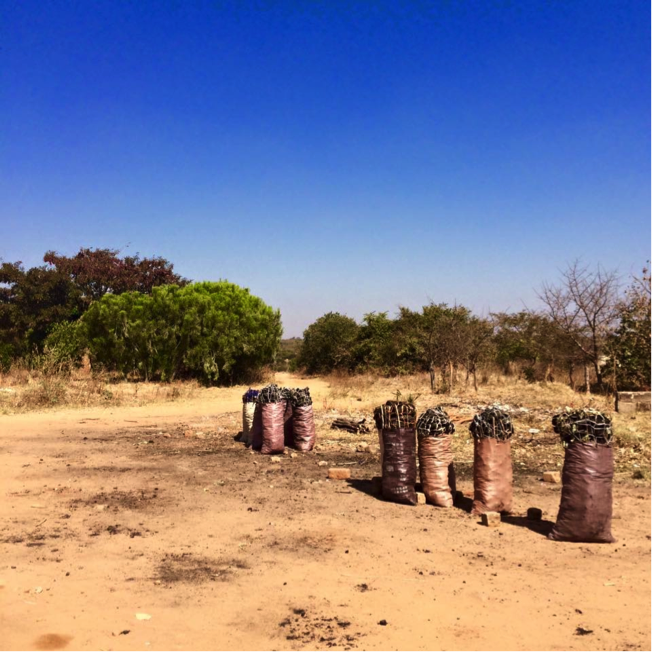Forest Trends is working in fourteen countries through the REDDX (REDD eXpenditures) Initiative to track REDD+ finance from high level donor commitments all the way down to how and when funds are actually spent on the ground. This post is the first in a series from the REDDX team, who are helping to prepare a comprehensive report on the forest carbon finance landscape in 2015.
It was early morning and smoke wafted over grass-thatched huts along the side of the highway, as we sped along the Great East Road.
“What’s the main driver of deforestation in Zambia?” I ask, peering out the cruiser window. Expecting the usual culprits – new agricultural expansion, infrastructure development, or mining – I am surprised by his answer: “Charcoal.”
Zambia has one of the highest deforestation rates in the world: each year the country loses an estimated 250,000-300,000 hectares of forested land. While it is known for its copper mining sector and maize exports, charcoal production remains the main cause deforestation.
Used as an inexpensive fuel for cooking and heating in the most Zambian homes, rural households rely heavily upon income derived from selling charcoal to city-dwellers within the capital city of Lusaka. Over half of the capital’s annual charcoal supply comes from peri-urban areas lying just southeast of the city. With little other income-generating alternatives in this area, the deforestation rate has skyrocketed to nearly 11 times the national average.
But a unique REDD+ project that is attempting to change that by minimizing local dependence on charcoal by providing communities with alternative ways to make a living. Implemented by the private sector developer, BioCarbon Partners Ltd., the Lower Zambezi REDD+ Project is Zambia’s first REDD+ pilot project. Unlike other REDD+ private sector projects in the region, the government plans to use the lessons learned from the pilot to help inform the national REDD+ strategy.
Working with local communities, the Zambian Forestry Department and Zambian Wildlife Authority, the Lower Zambezi REDD+ project aims to address this issue by protecting over 38,000 hectares of primary Miombo forest on the outskirts of the Lower Zambezi National Park. By promoting sustainable farming practices, providing training in forest carbon monitoring, and creating new jobs the pilot is diversifying incomes and ultimately alleviating some of the pressure on the forest.
Recent REDDX research shows that funding for these types of projects tends to be relatively limited. Multi and bilateral donors seldom funnel money towards pilot projects, preferring to contribute to other Readiness activities like policy development and institutional strengthening. What little money that is directed towards these types of projects comes from the private sector. However in many cases efforts are not tied into National REDD+ strategies and development.
REDDX was launched in 2011 to provide greater transparency around these and other REDD+ financial flows by determining how money is being spent on the ground. In partnership with national government and civil society organizations, the initiative currently operates in fourteen countries, collectively representing around 1.1 billion hectares of forest, or about 72% of the global tropical forest cover.
This fall, REDDX, along with Forest Trends’ Ecosystem Marketplace will bring together new data on both public sector finance and private sector projects to offer a comprehensive picture of forest carbon finance in 2015. Scheduled to be released ahead of the UN climate negotiations in Paris, the report will explore critical topics such private sector engagement and approaches for better integrating project-level and public-sector finance. In the upcoming months, we’ll be featuring posts on additional report topics.
Viewpoints showcases expert analysis and commentary from the Forest Trends team.
Connect with us on Facebook and Twitter to follow our latest work.


